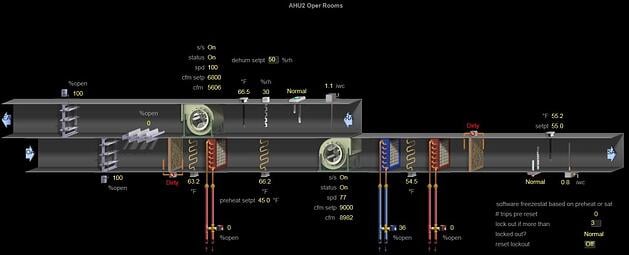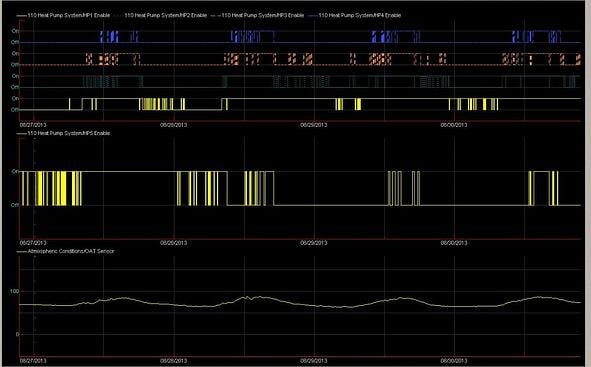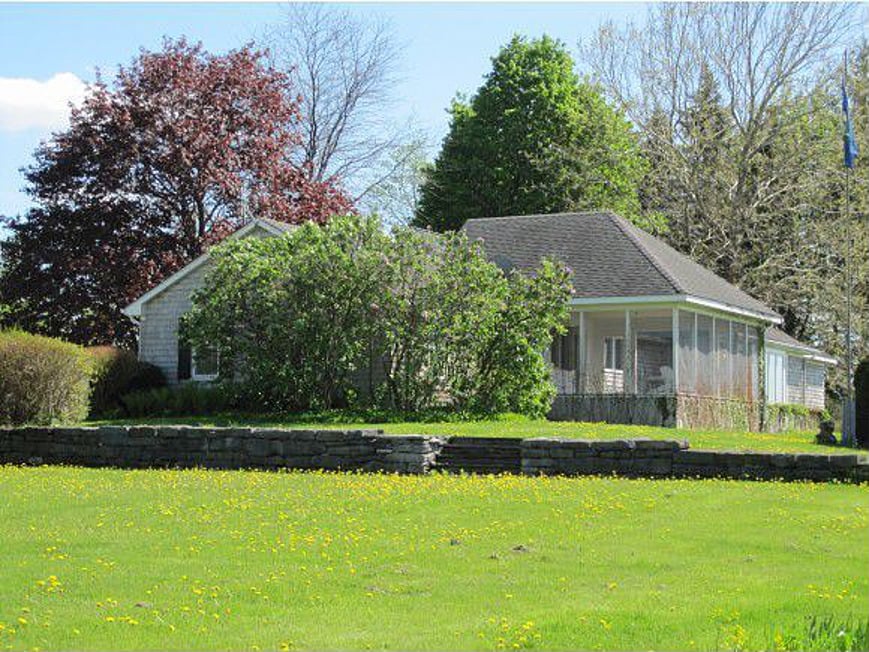We have posted several times about the importance of building control systems in achieving efficient building performance. In particular, building control graphics screens are a critical interface for understanding, operating, and maintaining building systems. Through my work in commissioning building systems, I have found opportunities to improve the effectiveness of the control graphics screens provided to clients. The following are a few observations and recommendations that I would like to share:
- Specify the required control graphics screens items in the design documents
When it comes to control graphics screens, what you see is what you get – and without a specification of what you want, sometimes what you get is an unpleasant surprise! Only about half of the projects we commission have specifications that explicitly state what items (e.g., inputs and outputs) are to be displayed on the graphics screens. Oftentimes only the user-adjustable inputs are specified. It is very important that owner’s preferences for control graphics screens are communicated to the Cx authority and the design team so that the controls contractor can deliver what is desired.
- Include fault detection and diagnostics (FD&D) algorithms to obtain meaningful alarms and feedback
It is common practice for control systems to include alarms that indicate when operating parameters are too high or too low (e.g., space temperature too high during cooling mode, heating hot water supply temperature too low, etc.). Unfortunately, the many alarms built into control systems can become an overwhelming nuisance and it can be difficult for facility personnel to effectively identify and address the most important feedback from the control system. FD&D software, or simply FD&D alarm algorithms in the control sequence of operations, can help to provide meaningful feedback from the system.
- Integrate HVAC controls interface with lighting controls interface and M&V interface
On most projects, the building management system (BMS) is really only an HVAC management system. Sophisticated, central control of lighting is becoming more commonplace, but these lighting control systems are typically separate from HVAC controls. The control of occupancy schedules, space setpoints, and operating feedback (e.g., space temperature and actual occupancy), could be significantly more powerful and streamlined if HVAC control interfaces were integrated with lighting control interfaces. Integration with measurement and verification (M&V) systems could provide even greater feedback on the operation of HVAC and lighting systems. Control interface integrations across these systems is currently limited by proprietary control hardware, software, and vendor expertise. However, I believe that once clients see the value of integration, vendors will respond.






